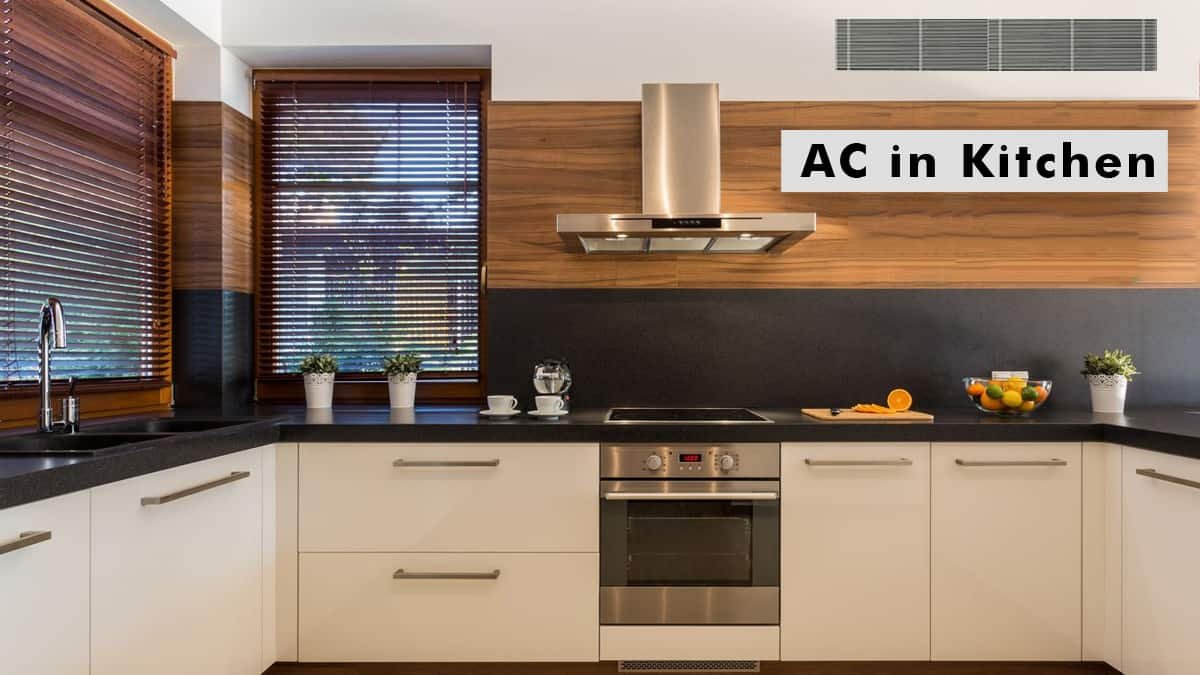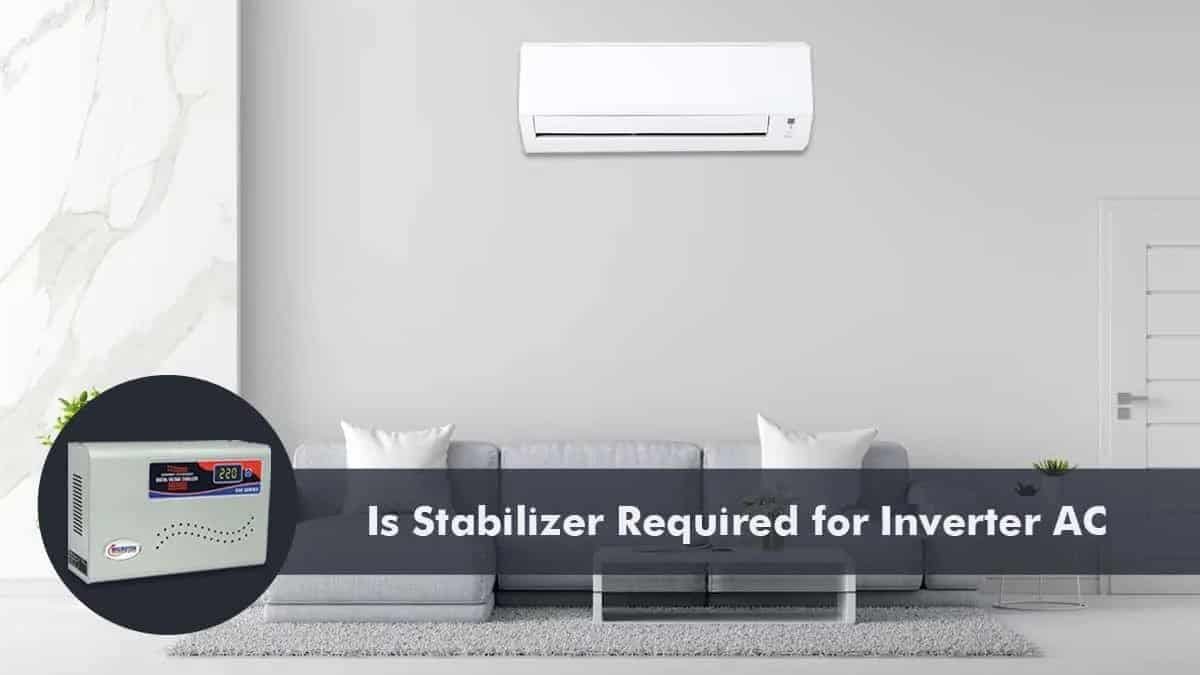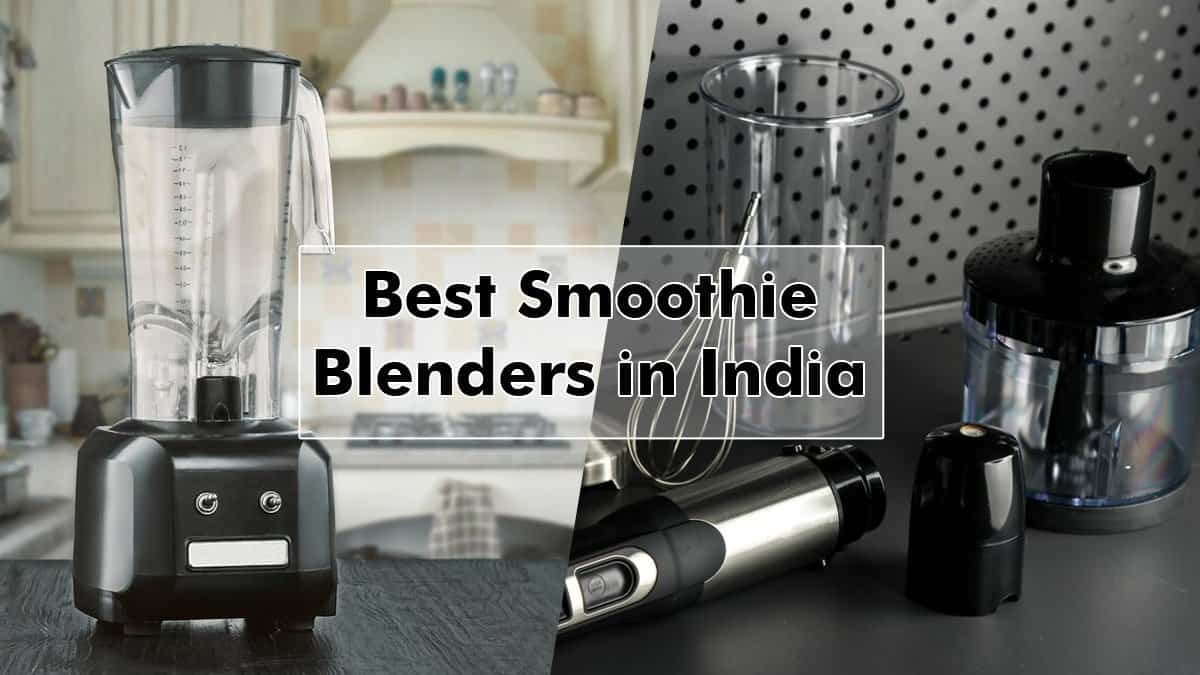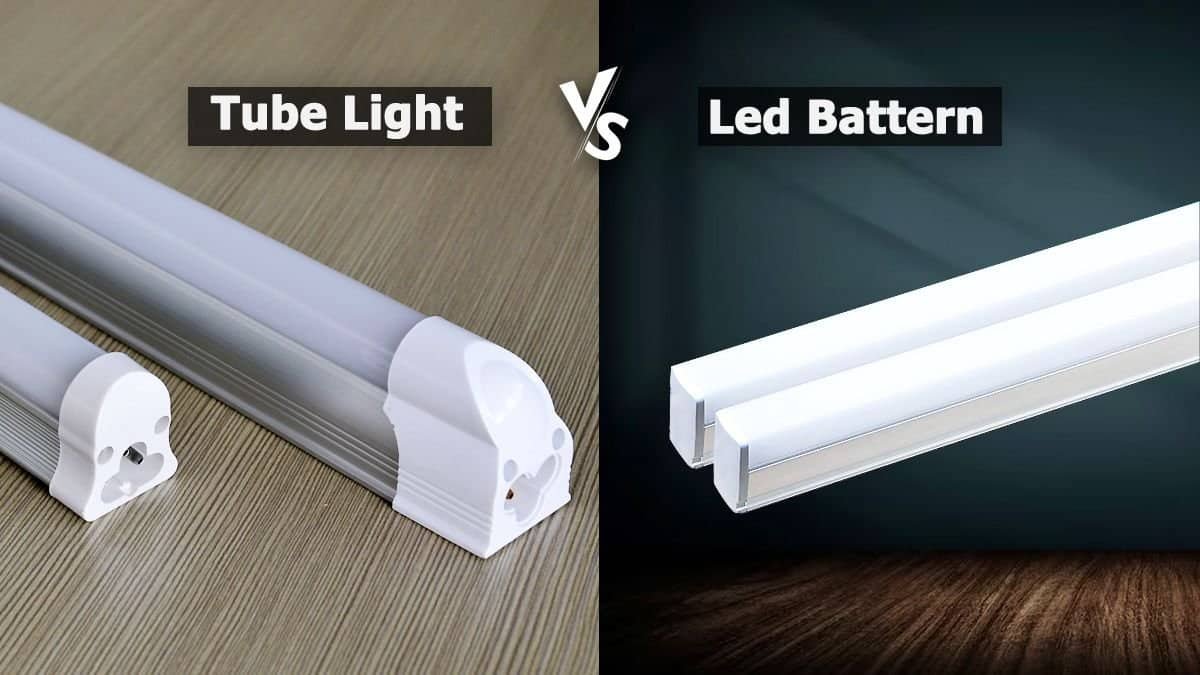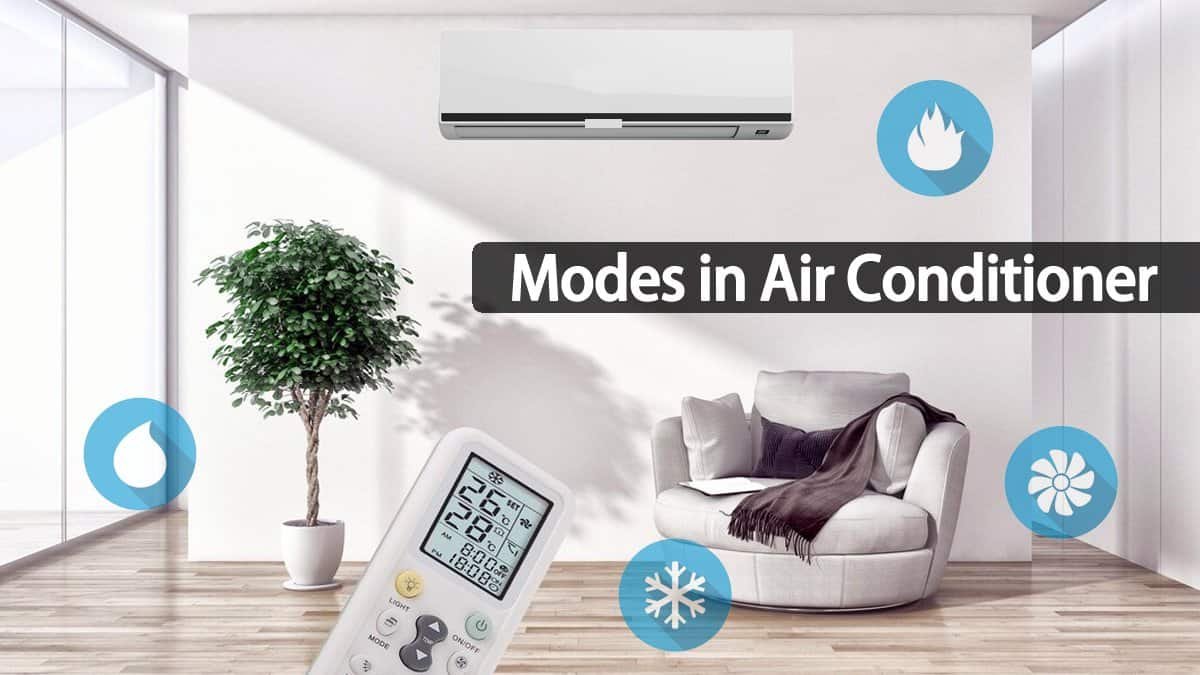Preparing meals in a hot and humid country like India can be challenging, especially when temperatures reach up to 48 degrees Celsius during the summer. Homemakers, predominantly women, experience discomfort standing in front of a gas stove due to the unbearable heat and humidity in the kitchen. While most living rooms are equipped with air conditioners, kitchens remain an overlooked space.
To address this issue, we will discuss whether using an AC in kitchen is feasible for optimising kitchen comfort. We will delve into the potential benefits and drawbacks of implementing this cooling system, drawing upon various sources and insights to comprehensively analyse the topic.
Table of Contents
Can You Use an Air Conditioner in Kitchen?
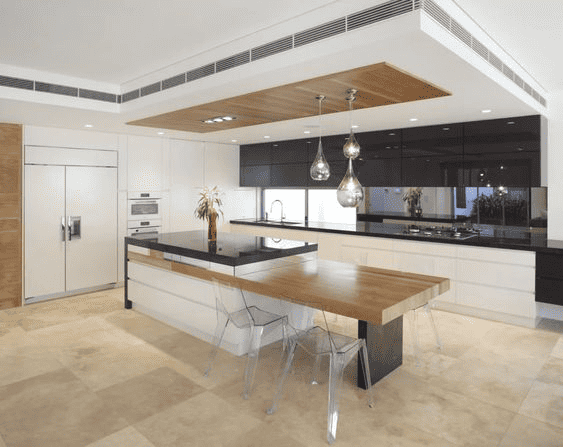
Although it may seem counterintuitive, utilising an air conditioner in your kitchen is possible. However, when doing so, several important factors should be considered to ensure both safety and efficiency. One crucial consideration is the installation of a properly functioning kitchen chimney above your stove.
This appliance is critical in eliminating fumes, smoke, grease, and other cooking byproducts from the room to prevent them from accumulating and creating hazardous conditions. Without sufficient ventilation, these particles can lead to unwanted discolouration of your ceiling or even the buildup of dangerous gases like carbon monoxide.
While proper ventilation is essential for safer cooking environments, air conditioning often requires enclosed spaces with minimal airflow. This creates a conflict that can be resolved using a reliable kitchen chimney. A functional chimney ensures adequate circulation even in sealed kitchens by effectively extracting cooking emissions and venting them outside the house – making AC operation much easier.
It’s worth noting that Indian cuisine typically involves using excessive amounts of oil and spices, which may produce more smoke and grease than usual while cooking. Therefore ensuring proper ventilation with an efficient kitchen chimney is necessary when considering using an air conditioner inside your kitchen.
Key Considerations for Installing an AC in Kitchen
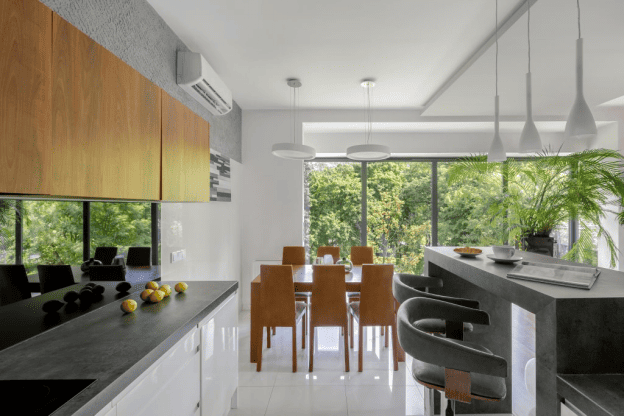
When installing an AC in kitchen, safety and performance are two critical factors that must be considered. To ensure optimal outcomes, here are some essential considerations:
1. Vital Requirement – Chimney
As stated above, installing a kitchen chimney is paramount for proper ventilation. It helps to dispel cooking emissions such as grease and smoke, which can clog the AC filters, coils, and internal components. In addition, a chimney reduces humidity and removes heat generated while cooking.
Our Suggestions:
Hindware Smart Appliances Nadia Stylish Filterless Auto-Clean Kitchen Chimney
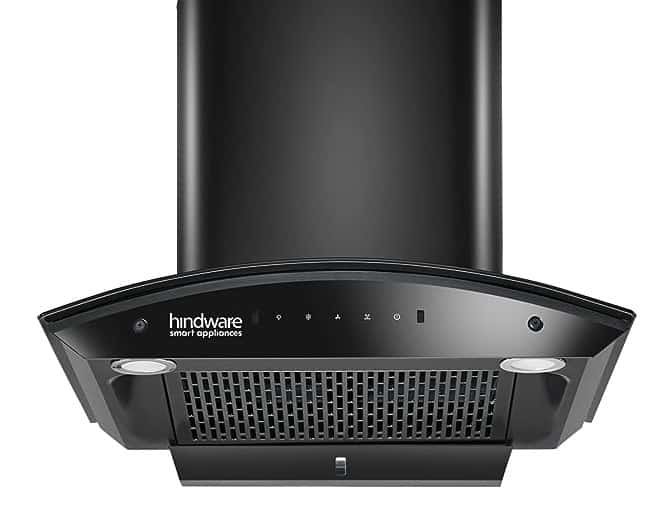
MRP: ₹12,799
Faber 60 cm 1000 m³/HR Pyramid Kitchen Chimney (Budget Friendly Option)
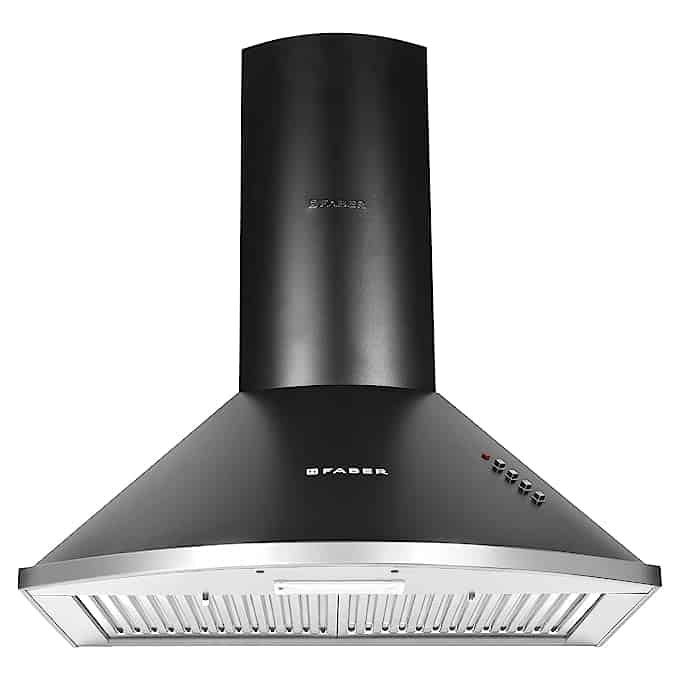
MRP: ₹6,990
2. Avoid Putting the AC Unit Above Your Gas Stove
Keeping your AC unit far from direct contact, especially above your gas stove, is crucial to prevent potential risks, such as the AC vents blowing air into the flame and impairing the cooking process. Besides, cool air from the AC may affect combustion levels by reducing heat, ultimately impacting your food’s taste.
3. Position It Away From the Gas Stove
Positioning the AC unit at a significant distance from the gas stove to maintain safety standards and efficient cooling capabilities is advisable. Placing it on an opposite wall or a considerable distance away prevents fumes from entering it while allowing even distribution of cool air throughout the kitchen for maximum effectiveness.
Finding the Perfect AC for Your Kitchen: Choosing the Right Cooling Solution
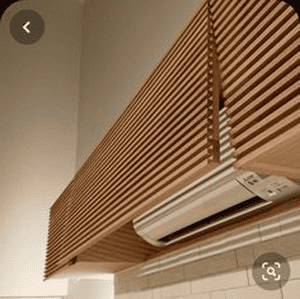
Choosing an appropriate and effective air conditioning unit for your kitchen requires careful consideration of several factors. Here are some key tips to help you make the right decision:
Depending on your kitchen’s layout, a window, split or portable unit could be suitable; however, a split or portable AC may be more appropriate for kitchens with gas stoves located near windows.
Selecting an AC with the right size and cooling capacity is crucial. Undersized AC units are not recommended, as cooking heat can increase load and power consumption. Moreover, maintaining a comfortable cooking environment while ensuring optimal cooking performance can be achieved by setting the temperature to around 26-28 degrees Celsius.
To minimise electricity costs, it is important to consider the energy efficiency rating of the AC unit before purchase. Choosing high energy efficiency rated models will ensure lower long-term operating costs without compromising performance levels.
When selecting an air conditioner for your kitchen, it’s also crucial to consider the noise level. As a bustling area with multiple appliances in use, choosing a unit that operates quietly is essential. Opt for models intentionally designed for low-noise operation to create a tranquil cooking atmosphere without unwanted disturbances.
We suggest considering the following AC models as suitable options for your kitchen:
NU 1 Ton 3 Star Inverter Split AC (Budget Friendly Option)
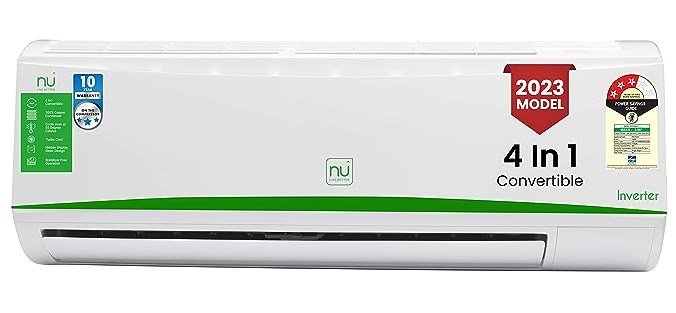
MRP: ₹ 26,990
Voltas Venture Slimline Tower AC (Tower AC)
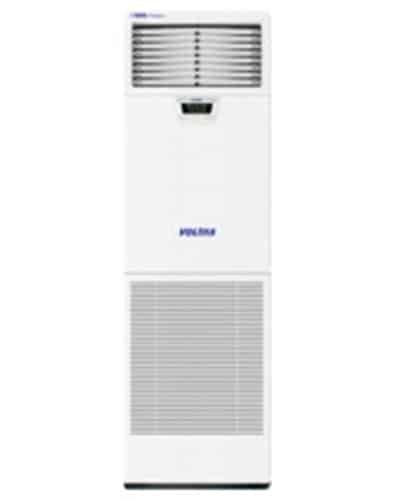
Cruise 1 Ton Portable AC with Anti-Bacterial Filter (Portable AC)
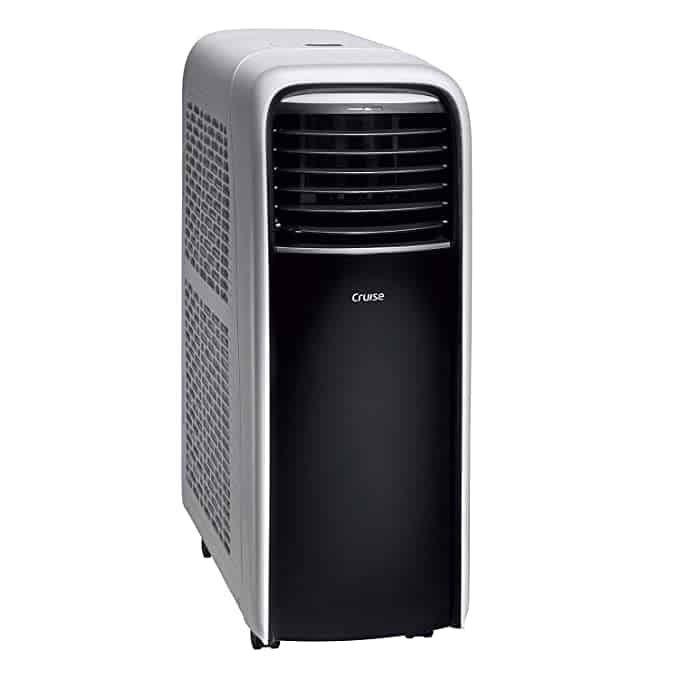
MRP: ₹ 30,990
Beyond Air Conditioning: Exploring Alternative Cooling Solutions for Your Kitchen
As homeowners, it’s essential to keep our living spaces comfortable and conducive for daily activities. However, installing an air conditioning unit may not always be the most practical solution when it comes to cooling our kitchens. Factors such as cost, limited space, or the lack of a sealed room can make installation challenging and expensive. But don’t worry – there are alternatives available that can provide much-needed relief from the heat and humidity!
Solution No. 1: Exhaust Fan

One excellent option is installing an exhaust fan in your kitchen. An exhaust fan removes your kitchen area’s steam, heat, and unwanted odours. While it might not actively cool down the room’s temperature, it helps reduce humidity levels effectively.
Another significant advantage of using exhaust fans is their affordability compared to air conditioning units – making them a budget-friendly option for those on a tighter financial plan. More so if you have windows already available on your walls since typical exhaust fans are made to fit this structure perfectly, smaller kitchens with limited space areas may use compact and versatile exhaust fans specifically designed for optimal efficiency while occupying minimal space.
Our Suggestions:
Havells Ventil Air DSP 230mm Exhaust Fan
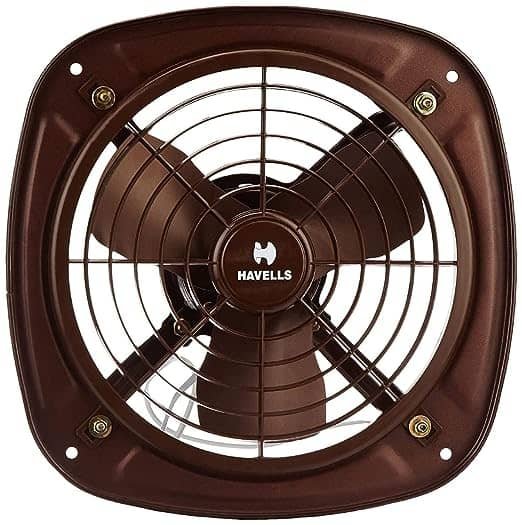
MRP: ₹ 1,199
USHA Aeroclean 300MM Goodbye Oil and Dust Metal Exhaust Fan
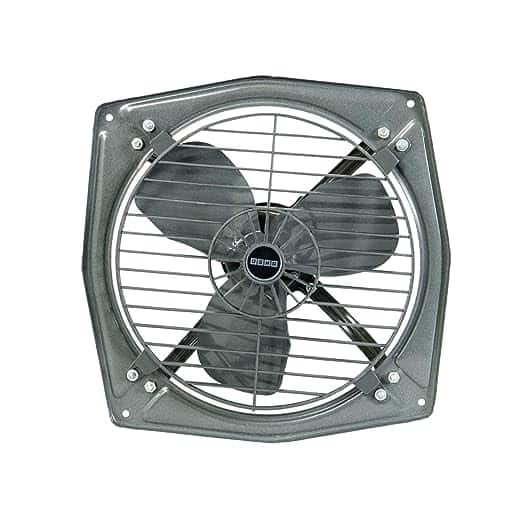
MRP: ₹ 1,399
Solution No. 2: Air Cooler or Spot Cooling Fan

Air coolers with spot cooling capabilities are designed to concentrate and direct airflow towards specific areas, ensuring the cooling effect is focused on you without disturbing the gas flame. Unlike regular room or desert coolers, these spot-cooling air coolers have blower-type fans that offer enhanced control over airflow direction and intensity.
Alternatively, you can consider using a small table fan. These compact fans deliver a smaller airflow, allowing you to position them strategically to direct the air towards you without affecting the gas flame. By carefully positioning the fan, you can enjoy the cool breeze while cooking without any safety concerns.
Both air coolers with spot cooling and small table fans offer practical cooling solutions for your kitchen, ensuring you stay comfortable while cooking. Overall, these alternatives provide localised cooling without compromising the safety of your gas flame.
Solution No. 3: Kitchen Table Fan
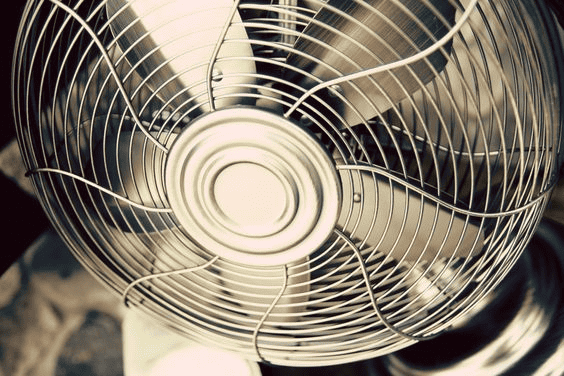
A kitchen table fan can be a practical and affordable solution when it comes to maintaining air circulation and cooling in your kitchen. Designed specifically for kitchen use, these table fans offer unique features ideal for enhancing airflow and providing comfort while cooking.
One notable example is the specially designed kitchen table fan offered by Deco. This fan features a blower-type design that allows for spot cooling, ensuring that the airflow is concentrated and directed to provide relief exactly where you need it. Furthermore, this fan can be conveniently fixed on the wall at a higher position, delivering a refreshing breeze directly to your face without interfering with the gas flame.
The convenience of this kitchen table fan cannot be overstated. It helps maintain air circulation, reduce humidity, and enhance the overall comfort of your kitchen environment. Additionally, these fans are easily accessible on platforms like Amazon, making exploring and purchasing the specific product convenient.
Solution No. 4: Wearable Neckband Fan

The next option is the wearable neckband fan. Although they may sound unconventional, these handy devices can provide a personal cooling experience that you might find surprisingly beneficial. Designed to be worn around the neck, these compact fans offer a convenient way to combat the discomfort caused by excessive sweating during cooking. The main areas where sweat accumulates, such as the face and forehead, can be effectively targeted with the airflow from the neckband fan. By directing air towards these areas, the fan creates a cooling sensation and helps alleviate the need to constantly wipe away sweat.
While it may seem like a novelty item at first glance, the practicality and affordability of a wearable neckband fan shouldn’t be overlooked. It offers a hands-free experience, allowing you to move freely in the kitchen without the hassle of holding a fan or constantly readjusting its position. Moreover, these fans are generally available at a low cost, making them a budget-friendly option for personal comfort.
Our Suggestions:
CRENTILA Portable Neck Fan

MRP: ₹ 599
VERVENIX Hand Free Neck Fan
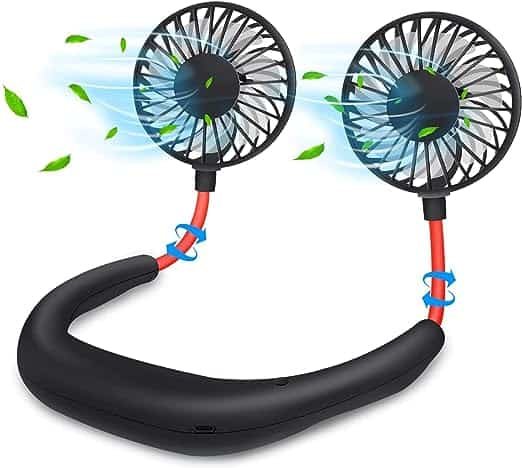
MRP: ₹ 449
Also Read
- How to Choose Between 1 Ton and 1.5 Ton AC?
- How to Set Timer in AC – Learn AC Remote Settings
- What is the Power Consumption of AC in 1 Hour?
The Bottom Line
In conclusion, selecting the appropriate cooling method for your kitchen necessitates thoughtful deliberation, considering individual requirements and safety considerations. Air conditioning may not always be the optimal choice due to cost and spatial constraints; however, there are viable alternatives. These include exhaust fans, spot coolers, table fans, and wearable neckband fans. Each option presents its advantages and disadvantages, such as localised cooling, affordability, convenience, and safety.
Ultimately, it is crucial to prioritise both your comfort and safety when determining the most suitable solution for your kitchen setup. By exploring these alternative options, you can make a well-informed decision that aligns with your specific circumstances. If you have any further questions, feel free to comment; we will get to you as soon as possible.
FAQs
Is it advisable to use an air conditioner in the kitchen?
Using an air conditioner in the kitchen depends on various factors. While it can provide effective cooling, there are considerations to keep in mind. These include cost, the absence of a sealed space, and limited room size. Alternative cooling options may be more practical and cost-effective for kitchen environments.
What are the alternatives to using an air conditioner in the kitchen?
There are several alternatives to consider. Exhaust fans effectively remove heat, odours, and steam from the kitchen. Spot coolers, table fans, and wearable neckband fans offer localised cooling and personal comfort. Each option has its benefits and considerations, so assessing your specific needs and kitchen setup is important.
Can I use a ceiling fan in the kitchen?
Ceiling fans are generally not recommended in the kitchen due to safety concerns. The airflow from a ceiling fan may interfere with gas flames, potentially extinguishing them. It is advisable to explore alternative cooling solutions that are specifically designed for kitchen use.
How do I choose the right cooling solution for my kitchen?
Consider your specific kitchen needs, including the size of the space and safety requirements. Assess factors such as budget, convenience, and effectiveness. Evaluate options like exhaust fans, spot coolers, table fans, and wearable neckband fans to determine which solution aligns best with your comfort and safety priorities. To know more, please read the post mentioned above.
